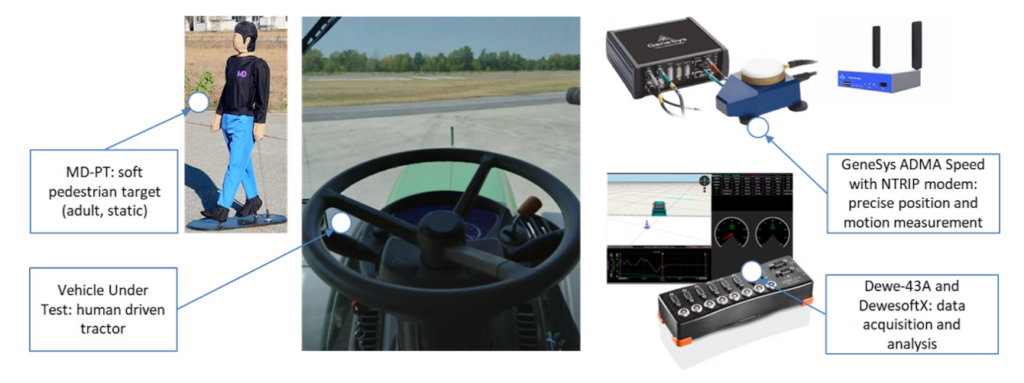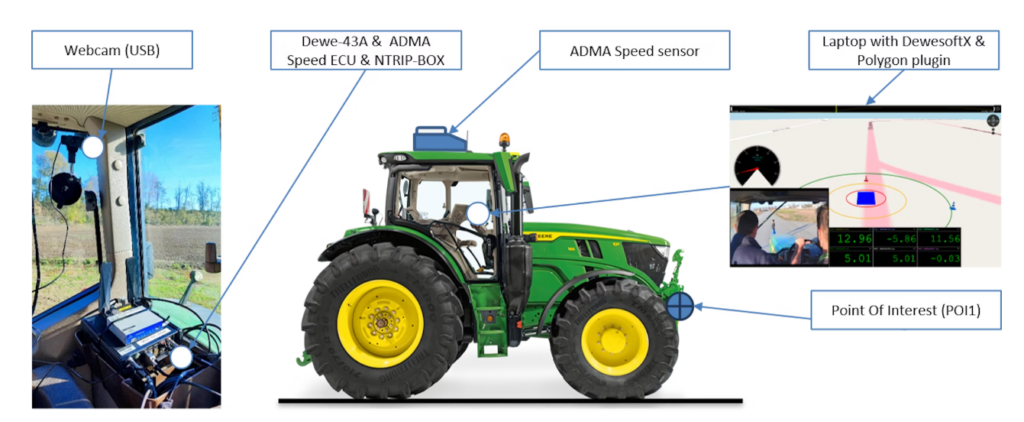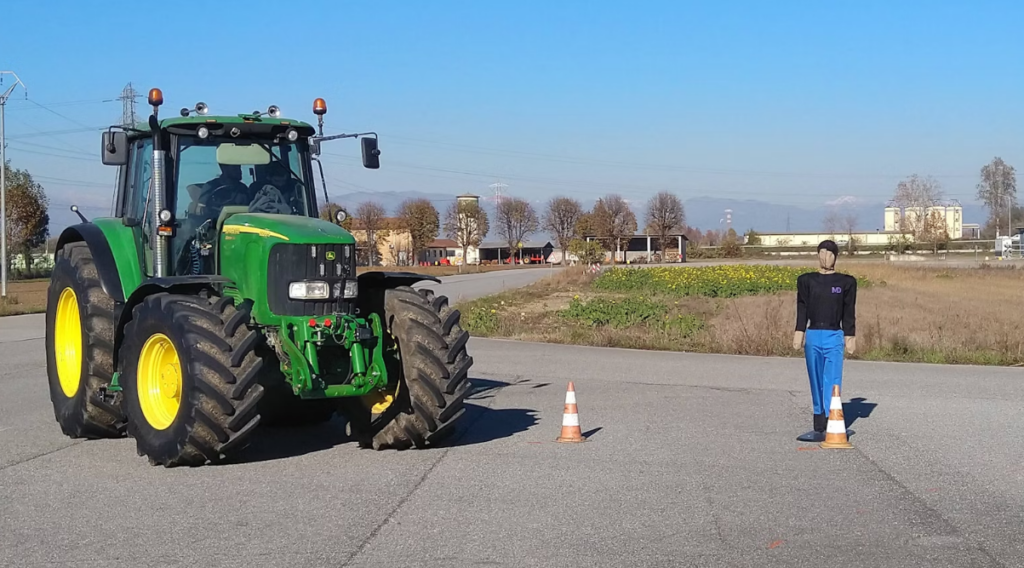This application note on ADAS Vehicle Testing on Tractors was originally published by our friends at Dewesoft. Read original article here.
ADAS stands for Advanced Driver Assisted Systems Testing. It’s a type of safety technology using sensors, radar, cameras and lidar that has been implemented in modern passenger cars and commercial vehicles. Such as collision avoidance, lane departure warning, blind spot detection, parking assistance, pedestrian detection and much more. Its purpose is to prevent accidents by offering advanced information to drivers.
The Emergence of ADAS in Agriculture
It is now making its way into the agricultural sector. Enhancing the safety of both operators and vulnerable road users such as pedestrians and cyclists. Firstly, “fast tractors” capable of speeds over 60km/h are becoming more common. Therefore, the need for safety systems like ABS and vehicle stability control are required.
This is where Italian Engineering Firm, Leane, comes to play. With over half a century of expertise in vehicle data acquisition, Leane has partnered with Dewesoft. With the purpose to integrate ADAS testing into these agricultural giants. In particular blind spot testing.
The challenge of Vulnerable Road User Detection (VRU) in Agriculture
This situation is unique due to the variable configurations of tractors and variety of terrains they operate. In addition, each set up of tractor with the tasks being performed eg. Towing a plow can alter its sensor range and the operator’s field of view. Therefore, it is difficult to standardise a range of safety protocols. Meaning they must be adapted to meet various testing methods.
Dewesoft’s Role of Enhancing Safety with ADAS Vehicle Testing on Tractors.
Collaboration between Leane and Dewesoft led to the use of sophisticated Dewesoft DAQ hardware and software to tackle the challenges. Firstly, preliminary tests were conducted by the National Research Centre for Agriculture (CREA). It focused on a pedestrian dummy using a camera and radar based solutions without onboard control system integration. This proved crucial in demonstrating the potential of such technologies to detect VRUs effectively.
The Set Up
Tests conducted on a controlled Asphalt Track to simulate real word scenarios. Equipment consisted of:
Dewesoft DEWE-43A Data Acquisition System paired with:
- Inertial Navigation System (INS) with DGNSS Real Time Kinematics (RTK)
- Pedestrian Dummy
- USB Camera
- Lap top with DewesoftX Data Acquisition Software with Ethernet Receiver and Polygon Extensions.
The INS and RTK provided precise measurements of the dummy’s position in relation to the tractor. This set up provided accurate verification of the detection systems under various speeds and angles of approach. Whilst the DewesoftX Poloygon plugin is tool for calculating parameters. Such as distance, position, or angle between moving or static objects such as cars, cones, tracks or lines.


The Future of ADAS in Agriculture
The success of these tests proved more complex future scenarios need to be tested. Such as robotic VRU carriers and driving robots to perform, further validate and refine ADAS technologies in agriculture. These advancements are not just about compliance with emerging regulations but providing a safer environment for all users in the agricultural landscape.
Conclusion
The integration of ADAS in agricultural equipment marks a significant advancement in the field of agricultural technology and safety. This collaborative effort not only highlights the adaptability of ADAS technology outside of traditional road vehicles. But also sets a precedent for future innovations in agricultural machinery safely. Read the original article for deeper insight into the processes and testing conducted.
To learn more about the technology used for ADAS Vehicle Testing on Tractors in this application, contact us.
